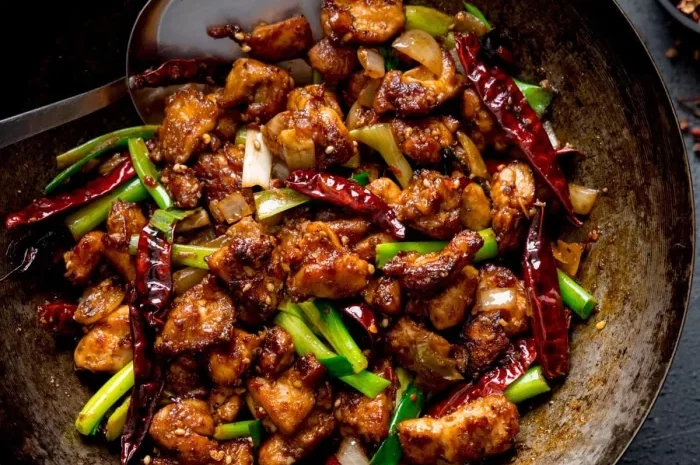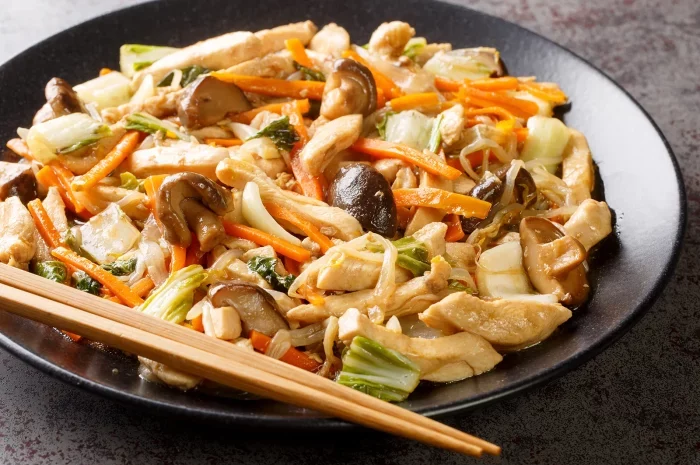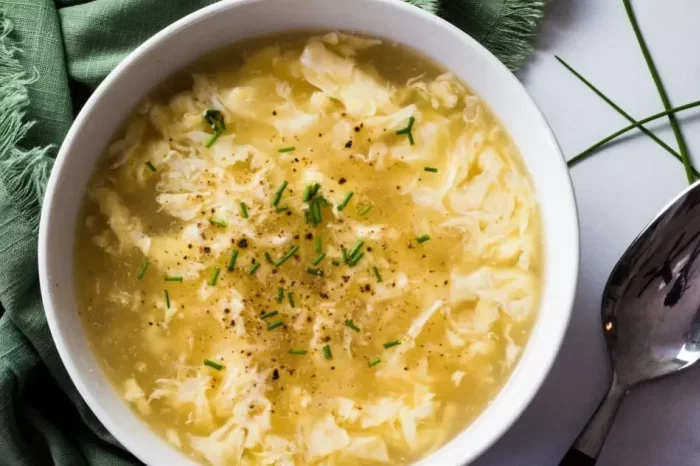Szechuan Chicken, a dish that has captured the hearts and palates of food enthusiasts around the world, is a shining star in the realm of Chinese cuisine.
With its bold flavors, fiery spices, and tantalizing aroma, Szechuan Chicken offers a culinary adventure that delights the senses and leaves a lasting impression.
In this comprehensive guide, we’ll unravel the mysteries behind Szechuan Chicken, exploring its origins, ingredients, preparation methods, and cultural significance.
Origins of Szechuan Chicken
Szechuan Chicken traces its roots back to the Sichuan province in southwestern China, a region known for its bold and spicy flavors.
Sichuan cuisine, characterized by its liberal use of garlic, ginger, chili peppers, and Sichuan peppercorns, is celebrated for its ability to awaken the taste buds and invigorate the senses. Szechuan Chicken is a shining example of the rich culinary heritage of this vibrant region, showcasing the distinctive flavors and cooking techniques that have made Sichuan cuisine renowned worldwide.
Ingredients
At the heart of Szechuan Chicken lies a harmonious blend of ingredients that come together to create a symphony of flavors. While variations of the dish may exist, the following are the key components that define the essence of Szechuan Chicken:
1. Chicken:
Traditionally, boneless chicken breast or thigh meat is used in Szechuan Chicken. The chicken is typically sliced or cubed and marinated to infuse it with flavor and tenderness.
2. Sichuan Peppercorns:
Sichuan peppercorns are the hallmark spice of Szechuan cuisine, prized for their unique numbing and tingling sensation. These fragrant peppercorns add depth and complexity to the dish, balancing the heat of the chili peppers and enhancing the overall flavor profile.
3. Dried Red Chili Peppers:
Dried red chili peppers provide the fiery heat that is characteristic of Szechuan Chicken. These peppers are often used whole or crushed to release their spicy essence, infusing the dish with a robust kick that lingers on the palate.
4. Garlic and Ginger:
Garlic and ginger are fundamental aromatics in Chinese cuisine, imparting depth of flavor and fragrance to the dish. These ingredients are finely minced or grated and sautéed to release their essential oils, adding layers of complexity to the sauce.
5. Soy Sauce:
Soy sauce serves as the savory backbone of Szechuan Chicken, providing depth of flavor and umami richness. Both light and dark soy sauces may be used, with dark soy sauce lending a deeper color and richer flavor to the dish.
6. Sugar:
A touch of sugar is often added to balance the heat of the chili peppers and offset the saltiness of the soy sauce. The sweetness helps to round out the flavors and create a harmonious balance in the sauce.
7. Scallions and Peanuts:
Scallions and peanuts are commonly used as garnishes in Szechuan Chicken, adding freshness, texture, and visual appeal to the dish. The scallions provide a pop of color and flavor, while the peanuts contribute a satisfying crunch and nuttiness.
Preparation Methods
The preparation of Szechuan Chicken involves a series of steps designed to maximize flavor and texture. While variations may exist, the following is a general outline of the cooking process:
1. Marination:
The chicken is marinated in a mixture of soy sauce, rice wine or vinegar, cornstarch, and sometimes egg white to tenderize the meat and infuse it with flavor. The marination process helps to ensure that the chicken remains juicy and succulent during cooking.
2. Stir-Frying:
The marinated chicken is stir-fried in a hot wok or skillet until golden brown and cooked through. This step imparts a delicious sear to the chicken while locking in its natural juices.
3. Aromatics and Spices:
Garlic, ginger, dried red chili peppers, and Sichuan peppercorns are added to the wok and stir-fried briefly to release their fragrant oils and infuse the dish with their distinctive flavors. This step is crucial for building the aromatic base of the sauce.
4. Sauce Creation:
A mixture of soy sauce, rice wine or vinegar, sugar, and sometimes chicken broth or water is added to the wok to create the sauce. The sauce is simmered until it thickens slightly and coats the chicken, creating a glossy and flavorful coating.
5. Final Touches:
Scallions and peanuts are added to the wok and tossed with the chicken and sauce to incorporate their flavors. This final step adds freshness, texture, and visual appeal to the dish, elevating it to a true culinary masterpiece.
Variations and Regional Adaptations
While the basic components of Szechuan Chicken remain consistent, there are countless variations and regional adaptations of the dish that reflect local preferences and ingredients.
Some variations may incorporate additional vegetables such as bell peppers, onions, or mushrooms, while others may feature different protein sources such as beef, pork, or tofu. Regional adaptations may also adjust the level of spiciness or sweetness to suit local tastes, resulting in a diverse array of interpretations of the classic dish.
Cultural Significance
Szechuan Chicken has transcended its origins in the Sichuan province to become a beloved culinary ambassador of Chinese cuisine to the world.
With its bold flavors, vibrant colors, and aromatic spices, Szechuan Chicken has captured the imaginations of food enthusiasts and inspired countless adaptations in kitchens around the globe. Whether enjoyed in a traditional Sichuan restaurant or prepared at home, Szechuan Chicken offers a tantalizing taste of the rich culinary heritage of China.
Conclusion
In conclusion, Szechuan Chicken stands as a shining example of the bold flavors and culinary artistry of Chinese cuisine. With its fiery spices, aromatic aromatics, and tender chicken, Szechuan Chicken delights the senses and leaves a lasting impression on all who taste it.


























